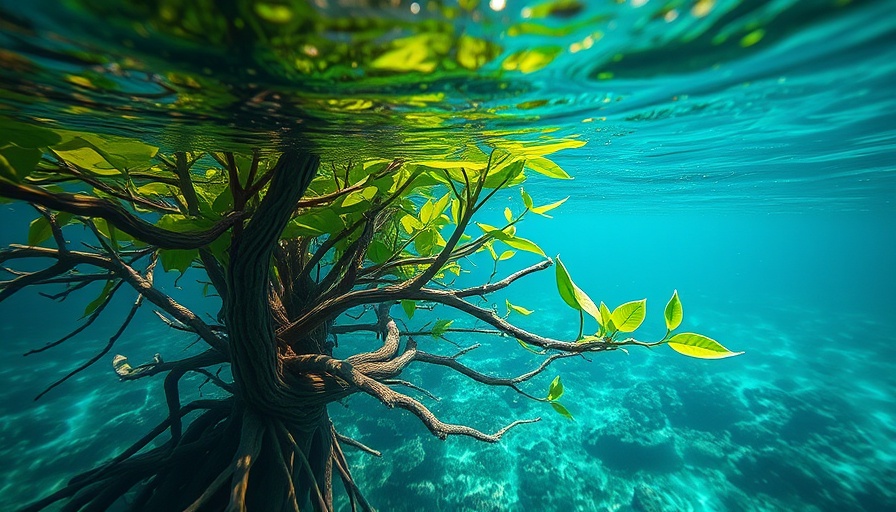
The Vital Role of Mangroves in Coastal Protection
In the Philippines, where the climate is marred by frequent typhoons, mangrove forests serve as unsung heroes that play a crucial role in shielding coastal communities from severe weather events. These unique coastal ecosystems, characterized by their complex root systems, slow wave energy and act as a natural barrier against storms, significantly reducing the impact of extreme weather. A notable instance was during Typhoon Rai in 2021 when over 8,000 hectares of mangroves on Siargao Island helped protect local communities, ensuring low fatalities despite the storm's ferocity.
Understanding the Threats to Mangrove Ecosystems
Sadly, this protective barrier is under continuous threat from human activities such as deforestation, coastal development, and pollution. Recent assessments indicate that more than half of the world’s mangrove ecosystems are at risk of collapse. The Global Mangrove Alliance reveals that between 1996 and 2020, the world lost over 5,000 square kilometers of these vital forests, roughly the combined area of several major cities. As 60% of the Philippines population inhabits coastal regions, the loss of mangroves presents a grave risk to millions.
The Economic Value of Mangrove Protection
Moreover, protecting mangroves isn't merely about environmental stewardship; it's also an economic imperative. A 2020 report in the journal Nature estimated that without mangroves, over $65 billion in property would be at risk from storms each year. This staggering figure illustrates the integral role of these ecosystems in daylighting the need for effective environmental policies and sustainable practices that promote their conservation.
Current Conservation Efforts
Conservationists are tirelessly advocating for the preservation of mangrove forests. Efforts are underway to expand mangrove habitats globally by 20% by 2030. This targeted expansion aims not only to enhance biodiversity but also to bolster climate resilience in vulnerable coastal communities.
The Future of Coastal Communities
The future of coastal ecosystems depends on our commitment to restoring and preserving mangrove habitats. Emphasizing sustainable living practices, supporting eco-friendly products, and reducing carbon footprints can accelerate conservation efforts. By fostering a circular economy and advocating for renewable energy solutions, we decrease our dependence on activities that threaten these vital ecosystems.
Acting Now for Lasting Impact
As we face escalating climate challenges, taking action today is paramount. Embracing sustainable practices—whether through making conscious consumer choices, getting involved in community conservation projects, or supporting policies that protect mangrove forests—can lead to a sustainable future. The health of our planet depends on the decisions we make today. Join the fight for cleaner coasts and a balanced ecosystem, because together, we can ensure that these vital forests continue to thrive and protect future generations.
 Add Row
Add Row  Add
Add 



Write A Comment